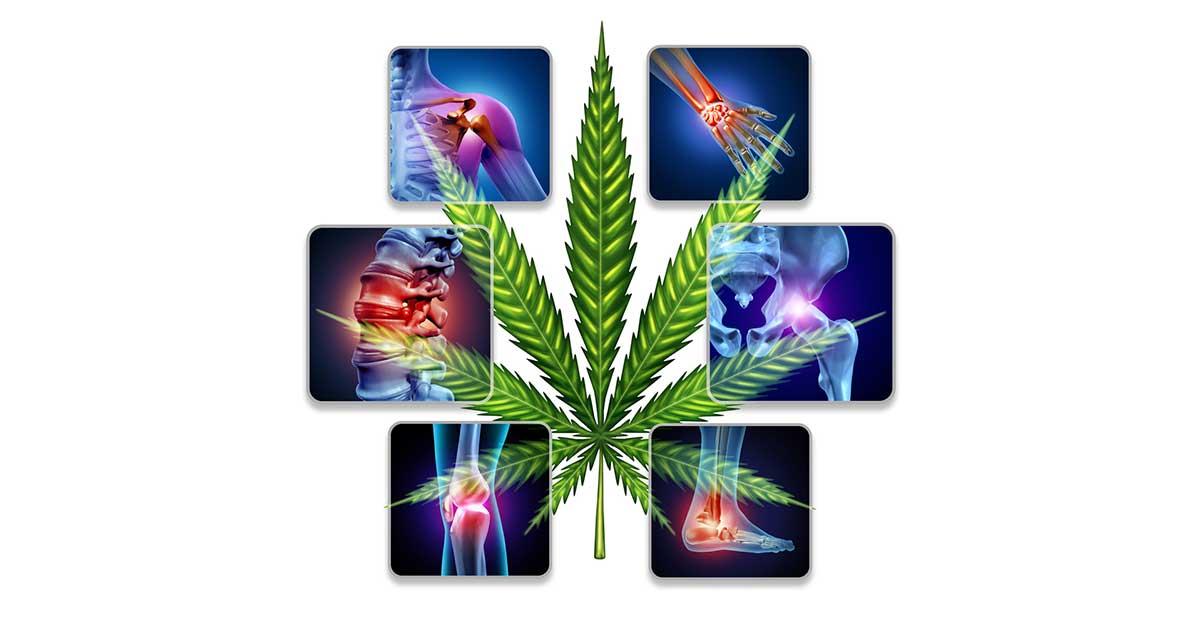Chronic pain is the body’s way of telling us that something’s not right. Whether an acute accident or ongoing illness, pain is the most common reason people see a doctor or seek medical treatment. In fact, in 2018, the CDC concluded that an estimated 50 million Americans, or just over 20% of people, suffer from some form of chronic pain. One of the toughest parts about pain is that treating it is incredibly challenging. That’s because there are limited effective medicines for certain types of pain, and worse, many times, treatments come at the expense of severe side effects.
Pain management and Ohio medical marijuana discoveries bring natural remedies to light
Fortunately, thanks to the discoveries about the endocannabinoid system, there’s a rising interest in exploring natural remedies for pain relief. A majority of states in the U.S. have also legalized medical cannabis opening up the door for individuals to treat their pain using marijuana. If you’re interested in learning about the pros and cons of using medical cannabis and have questions, Releaf Health Clinic can help.
We offer one-on-one video consultations – or telemedicine appointments – to help patients build out their pain management plans. We firmly believe in integrating evidence-based standardized medicine with cannabis medicine for a holistic approach to pain management. Let’s dive into three questions to keep in mind when considering medical marijuana.
- What types of pain can marijuana treat? Medical marijuana is a popular alternative to pharmaceutical medications, including opioids. Many individuals report that medical marijuana eases certain types of chronic pain, including pain resulting from nerve damage, inflammation, pain from HIV/AIDS, cancer treatments, MS, and much more. Many patients also experience positive benefits from using cannabis to manage joint pain or everyday pain like headaches, back pain, toothaches, or when suffering from other injuries.
- How does MM work? Although research is ongoing, scientists tell us that there are several medicinal properties of cannabis plants that can help ease the pain. In addition to terpenes and flavonoids, other critical compounds within cannabis plants are cannabidiol (CBD) and tetrahydrocannabinol, referred to often as THC. Researchers have found the CBD might have some interference with our brain chemicals, including the ‘feel-good’ hormone serotonin and some influence on glycine receptors, which may impact how we experience pain. Many doctors think CBD also has many anti-inflammatory properties and impacts multiple targets to help bring our bodies back into balance.
One the other side of the coin, THC activates specific cannabinoid receptors, one of which is in our nerve cells, and the other is in the immune cells. When it enables the one in the nerve cells, many believe it causes the ‘high effect,’ which influences the sensation of pain or how people experience pain. By affecting our neurochemistry, these compounds work synergistically, producing significant improvements in pain relief. Working with your doctor to select a product rich in THC, CBD, or both may make a difference in the kind of pain relief users experience.
- What are the best marijuana strains for chronic pain? There is limited research available on specific marijuana strains for proven pain relief. However, there’s significant anecdotal evidence and results shared by individuals through online surveys and other methods that indicate a majority of participants prefer Indica strains for pain management, sedation, and sleep. At the same time, they opt for Sativa strains to improve energy and mood. Also, there are several strains, including hybrids of marijuana available, so even if one strain does not reduce symptoms, another may. It’s best to consult with a medical professional about current medications and specific treatments and keep the MM dosage low. Increasing the dosage slowly and systematically often delivers the best outcomes.
Taking the next step
Many individuals have found cannabis to be a safe and effective alternative to pain management. Whether you are someone suffering from chronic pain from nerve damage, HIV, you are going through cancer treatments, or you have a soft tissue strain, cannabis offers an effective pain management option. If you’d like to learn more about MM, including how-to’s on obtaining a certified Medical Marijuana Card for use in Ohio, schedule an appointment today! We’re 100% committed to providing consultative care so you can find the right MM and CBD products to treat your pain and discomfort so that you can live your best life – pain-free.



I found it interesting when you talked about chronic pain and its alternative medical treatment. Recently, one of my uncles mentioned he’s suffering from severe joint pain. My uncle can’t handle the discomfort anymore, and I think it’s time he considers another option, so I’ll be sure to share your article with him. Thanks for the information on medical marijuana and its impact on chronic pain.